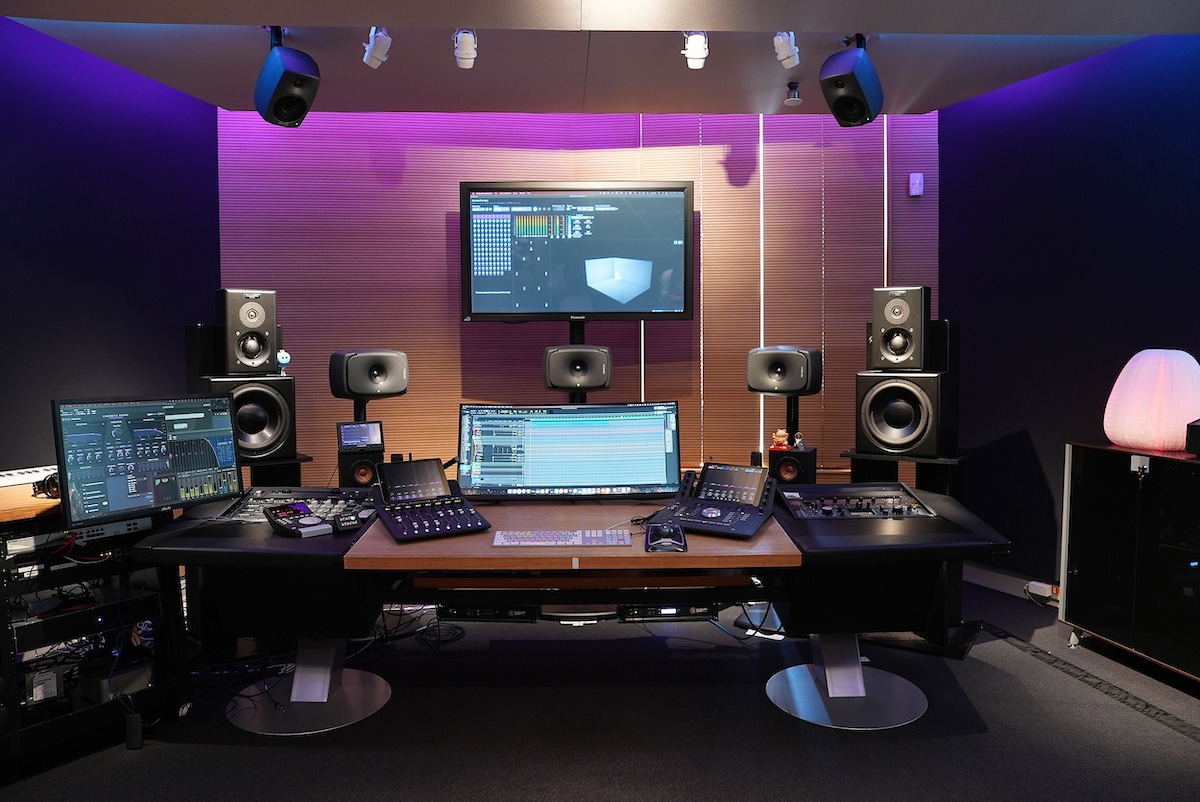Founded in 2012, Canada’s PHI Centre in Montreal is dedicated to innovation at the frontiers of creative production and fosters the design, development, production and presentation of various disciplines and forms, emphasizing digital technologies and new media. It is also committed to presenting local artists, so when it started to explore how immersive audio could provide new experiences in its public space, it was essential to look at how to create those immersive experiences via its studio. Genelec monitors are right at the heart of the immersive solution — in both the public space and the studio.
“PHI is made up of three distinct entities,” explains Phil Rochefort, the creative sound supervisor responsible for the design and build of both environments. “The PHI Foundation for Contemporary Art is a non-profit organization dedicated to bringing impactful contemporary art experiences to the public, and caters for a variety of free exhibitions. Meanwhile, the PHI Centre hosts concerts and exhibitions in VR, AR, MR and mixed media. PHI Studio has developed a reputation as an incubator for talent at the vanguard and as a catalyst for the conception and implementation of immersive multidisciplinary projects. We aim to encourage access to the arts across various mediums. We take a very pluralistic approach to it all.”
A cocoon of sound
The public listening environment in the PHI Centre was created first. Designed around 16 8020 monitors and known as Habitat Sonore, it is a flexible multichannel environment that the PHI Centre says enables the “playback of several commercial immersive formats and can also be used as an ‘instrument’ for artists to explore spatialization possibilities. Habitat Sonore is a place that offers multiple creative opportunities for collaboration, meditation and experimentation.”
Rochefort describes the soundproofed and acoustically-treated space as entering a cocoon of sound. With no visuals to distract visitors, the space engages people in unexpected ways. “There aren’t many public listening spaces like this in North America,” he says. “We designed the room to be flexible enough to play commercial renders as well as allow artists to mix in the room directly. When most people listen to music in their day-to-day lives, they are not necessarily engaged. Habitat Sonore is about helping adapt the public to their environment; it is not so much about objects as it is about re-engaging people’s sense of hearing and how they listen.”
With momentum building for immersive content in the public space, Rochefort’s attention turned to the studio. Designed as a traditional tracking studio when the building first opened ten years ago, Rochefort wanted the space to work much harder. The studio now serves as both a commercial entity and a laboratory to adapt works to tell different stories.
“There’s a lot you can do in the studio to help prototype and explore the creative possibilities of the work we were already doing in VR and AR development, and we weren’t getting it with the existing studio,” he explains. “In addition, Montreal has a very active new media scene, and we also wanted to give those artists a space to come and work. A lot of them work in immersive audio, and they need places to test stuff out. So, we created an ecosystem which caters to both needs.”
Based around Genelec Smart Active Monitors, the 7.1.4 studio uses seven 8341 coaxial three-way monitors in the front and surround positions, four 8330 two-ways for the height channels, and a pair of 7360 subwoofers. Crucially, GLM software pulled everything together.
Real precision
“Genelec was already our speaker of choice, but when I demoed the 8341s in the studio, they were unlike anything I had heard before,” says Rochefort. “For an immersive setup, you need perfectly time-aligned imaging and real precision, and the studio was never designed as an immersive room. Having the GLM software to correct those challenges in such a difficult space proved invaluable. “GLM takes all the guesswork out of time alignment, which is critical for Atmos. I do A/B tests all the time, and the difference is night and day,” he continues. “I basically always have GLM turned on. I love it!”
Rochefort isn’t the only one taking advantage. In the same way, as visitors are re-engaging their connection to sound in the PHI Centre, Rochefort says the studio is providing a stronger creative connection to the work produced there.
“It is fascinating to see how artists who have never experienced immersive environments push the boundaries of it. Most of the artists we work with love how it allows you to collapse or expand the space or use it to introduce tension and surprise. I’ll lay out their music and start throwing stuff around the room, and suddenly, you can see them engaging with it and exploring different possibilities. Immersive audio presents another dimension to their creative process beyond just making a good sounding recording; it can turn a good recording into an experience.”
Other studio transformations using Genelec monitors
Genelec helps Dubidub Studios create immersive Dream Room
Tokyo’s Studio Brain upgrades with Genelec
Downtown Dubai opens up with Genelec
Genelec sets tone for new San Francisco facility
Seoul Arts Center adds immersive audio capabilities with Genelec

